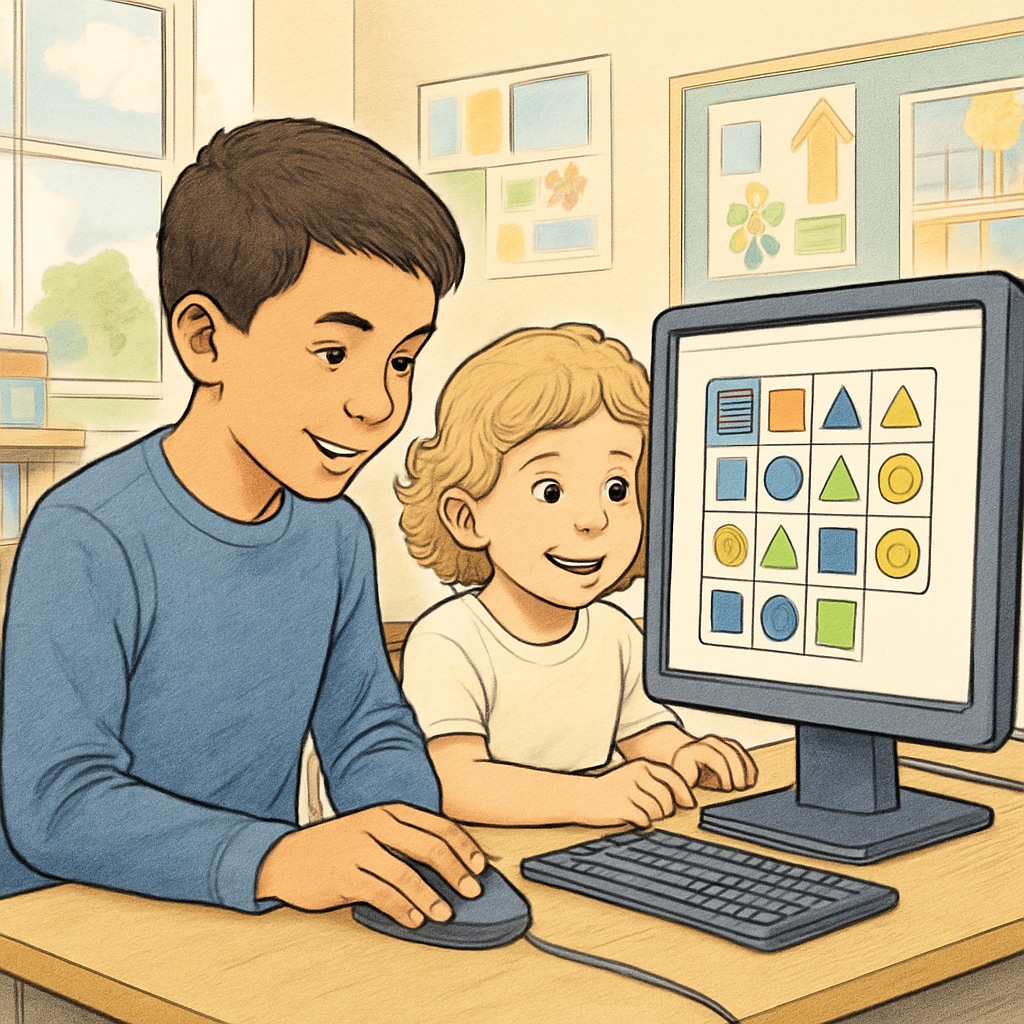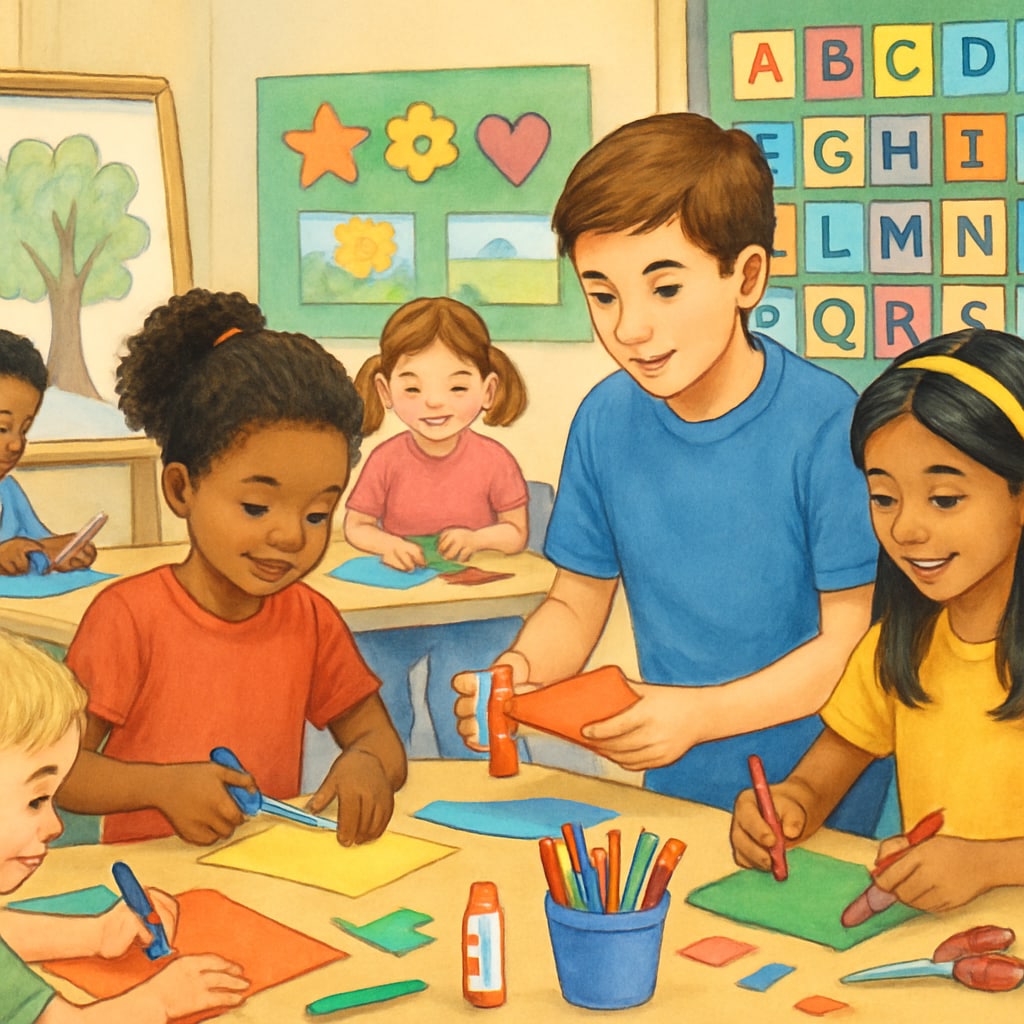Creating a successful kindergarten buddy program that bridges the gap between young learners and older elementary students can lead to profound educational and social benefits. A thoughtfully designed buddy system, incorporating interactive activities like literacy games, collaborative projects, and even computer skills sharing, can foster mutual growth, empathy, and teamwork among students. This article outlines a structured plan to implement such a program, ensuring a nurturing environment for both age groups.
Building the Foundation: Why Cross-Age Buddy Programs Matter
Cross-age buddy programs offer a unique opportunity for students to engage with peers at different developmental stages. For kindergarteners, the presence of a “big buddy” helps build confidence, improve social skills, and develop a sense of belonging. Fourth graders, on the other hand, benefit from the chance to develop leadership, patience, and mentoring abilities. This dynamic creates a win-win situation that supports the growth of both groups.
According to Britannica, mentoring relationships in schools have been shown to improve academic and social outcomes, making these buddy programs an excellent addition to any curriculum.
Interactive Activities for Meaningful Engagement
To ensure the program’s success, activities must be age-appropriate, engaging, and designed to promote collaboration. Below are three key activity categories:
- Literacy Activities: Pair students for shared reading sessions where fourth graders read to their kindergarten buddies. This not only models good reading habits but also helps younger students develop a love for books.
- Creative Projects: Encourage hands-on activities such as crafting greeting cards or building simple art projects together. These tasks stimulate creativity and teamwork.
- Computer Skills Sharing: Older students can guide younger ones in basic computer tasks, such as navigating educational games or using a drawing program. This builds both technical skills and trust between buddies.
In addition, incorporating play-based learning elements into these activities ensures that they remain enjoyable for children while delivering educational benefits.

Steps to Implement a Kindergarten Buddy Program
Establishing a structured buddy program involves careful planning and coordination. Below are some essential steps:
- Pairing Students Thoughtfully: Teachers should match students based on personality, interests, and strengths to create compatible pairs.
- Setting Clear Goals: Define specific outcomes, such as improving literacy or fostering social connections, to guide the program’s activities.
- Providing Training: Offer fourth graders a brief workshop on how to interact with younger children, emphasizing patience and encouragement.
- Scheduling Regular Sessions: Consistency is key. Weekly or bi-weekly sessions ensure that relationships have time to grow.
- Monitoring Progress: Teachers should periodically evaluate the program’s effectiveness and make adjustments as needed.
For additional insights into effective mentoring, refer to the Peer Mentoring page on Wikipedia.

Overcoming Potential Challenges
While the benefits of a buddy program are substantial, challenges can arise. For instance, some fourth graders might find it difficult to connect with younger children initially, while kindergarteners may feel shy or overwhelmed. To address these issues:
- Provide icebreaker activities to help students bond during the early sessions.
- Encourage teachers to observe interactions and step in if necessary to guide the pairs.
- Offer reflection opportunities where students can share their experiences and suggest improvements.
By proactively addressing challenges, educators can ensure that the program remains positive and productive for all participants.
The Long-Term Impact of Cross-Age Programs
Beyond the immediate educational benefits, cross-age buddy programs leave a lasting impact on students. Kindergarteners gain role models who inspire confidence and curiosity, while fourth graders develop empathy and leadership skills that serve them well into adulthood. Moreover, the program fosters a sense of community within the school, creating connections that extend beyond the classroom.
As schools continue to seek innovative ways to enhance learning and social development, buddy programs stand out as a timeless approach to bridging age gaps and fostering meaningful relationships.
Conclusion: A well-executed kindergarten buddy program can transform the educational experience for both younger and older students. By incorporating a mix of literacy, creative, and technological activities, educators can create a dynamic environment where children learn from and inspire one another. The result is a stronger, more connected school community that values collaboration and growth.


